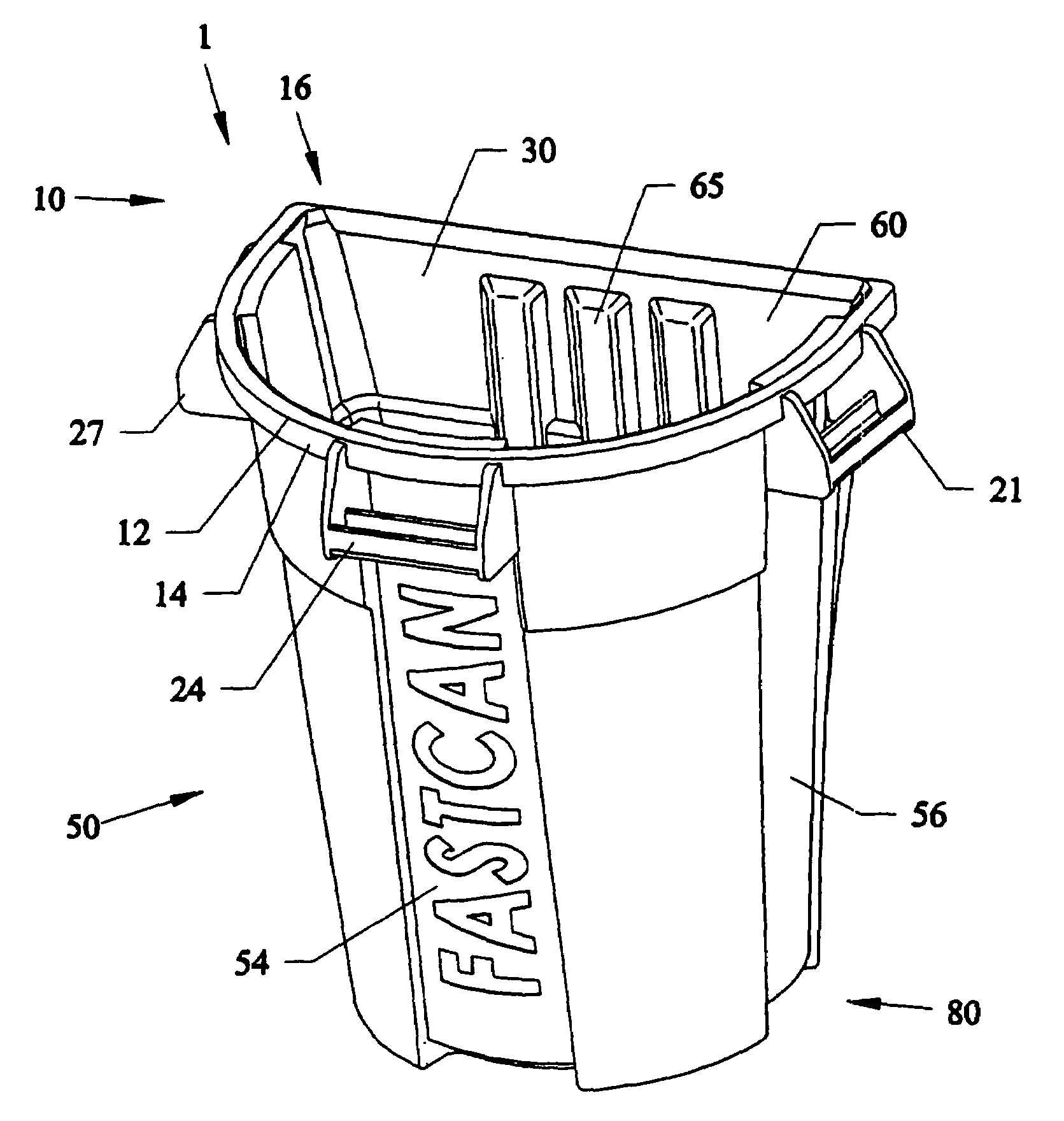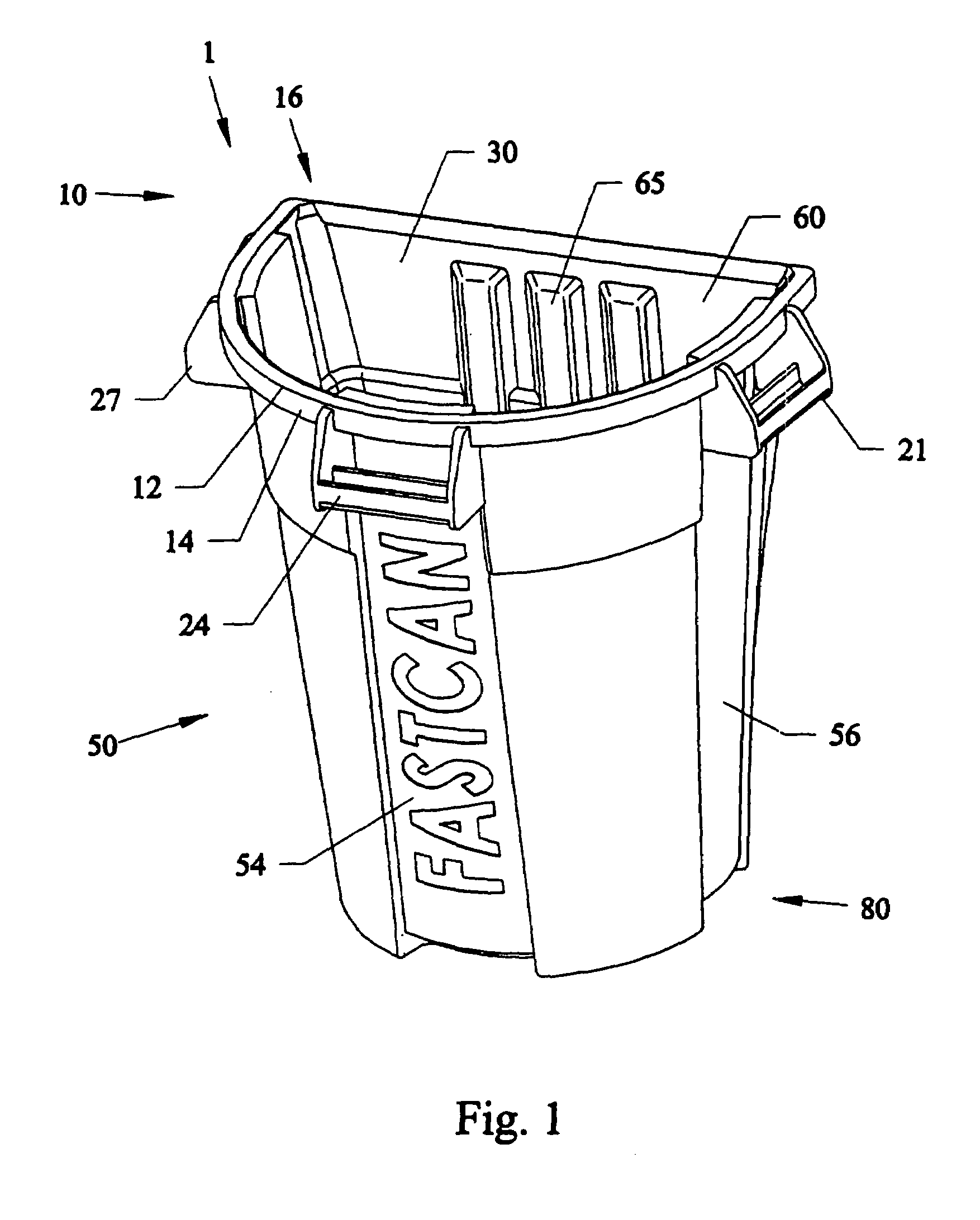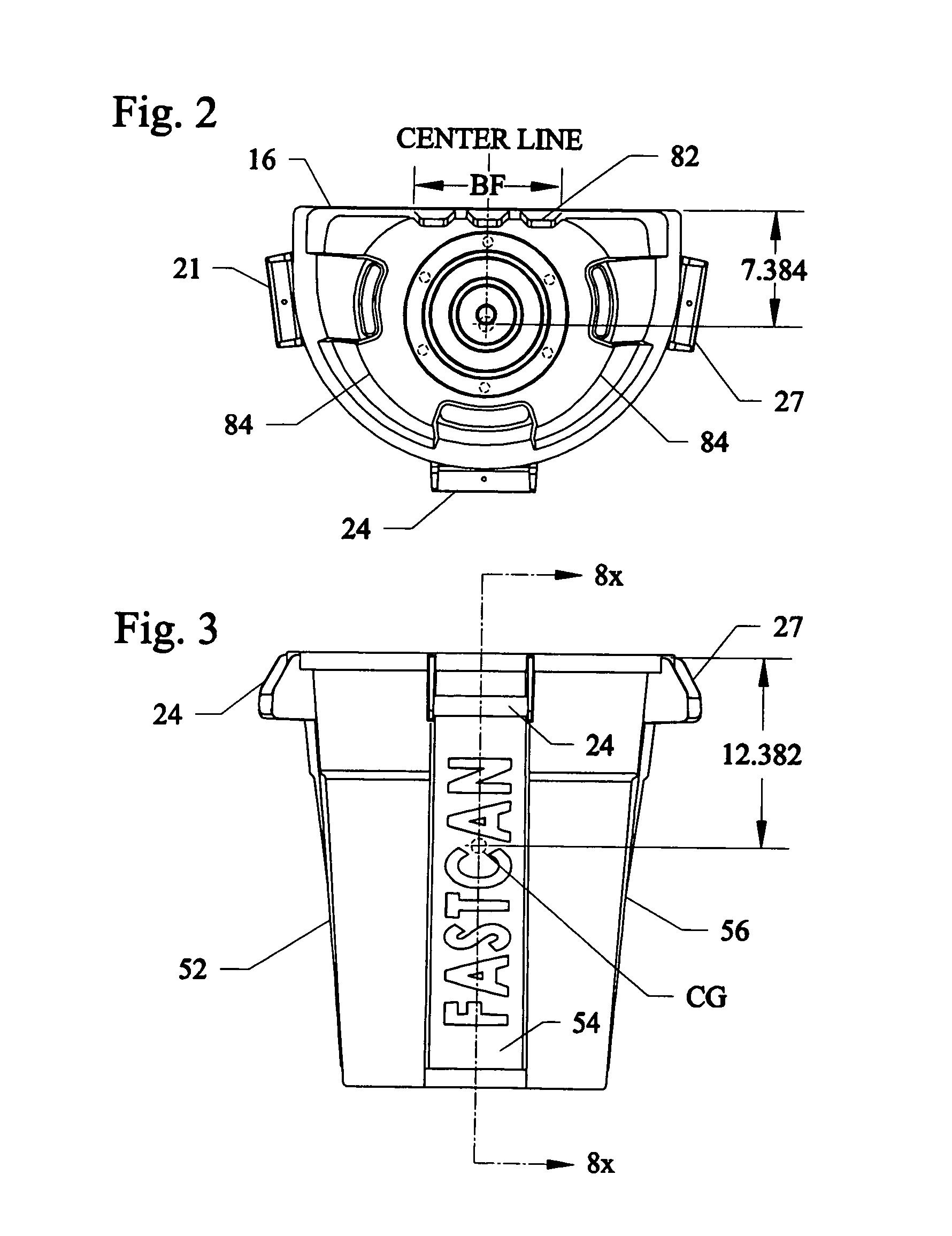Fastcan
a technology of fastcan and container, applied in the field of outdoor refuse containers, can solve the problems of difficult and near impossible sweeping, raking, and moving the refuse into the container, and achieve the effect of easy lifting uprigh
- Summary
- Abstract
- Description
- Claims
- Application Information
AI Technical Summary
Benefits of technology
Problems solved by technology
Method used
Image
Examples
first embodiment
[0069]FIG. 1 is a front upper right perspective view of the novel outdoor refuse container 1. FIG. 2 is a bottom view of the container 1 of FIG. 1 showing the substantially circular configuration bottom end 80. FIG. 3 is a front view of the container 1 of FIGS. 1–2. FIG. 4 is a rear view of the container 1 of FIGS. 1–3 showing the triangular-tubular shaped flat side wall portion 60. FIG. 5 is a top view of the container 1 of FIGS. 1–4. FIG. 6 is a side view of the container 1 of FIGS. 1–5. FIG. 7 is a side view of stacked containers 1, 1′, 1″. FIG. 8 is a cross-sectional view of the container 1 of FIG. 3 along arrows 8X. FIG. 8A is an enlarged view of the sloping scoop edge portion 16 with rounded blunt end and slopping ramp portion.
[0070]Referring to FIGS. 1–8A, a first embodiment container 1 can be formed in a single piece from injection molded plastic, and the like, and have an open upper end portion 10 that can include a substantially D-shaped cross-sectional configuration defin...
embodiment 600
[0088]FIG. 24 is another embodiment 600 showing molded side support members 620, 610 on the novel container 1 of the preceding embodiment for supporting long handled tools 720 such as rakes, brooms and shovels therein. An upper support member 620 molded onto the side of the container 1 can have a through-hole therethrough for allowing the long handle 715 of the implement to slide therethrough. A lower support member 610 adjacent to the bottom end 80 of the container 1 can be funnel shaped with a larger top opening 611 than a bottom opening 619 so that water can drain through the holder 610 but still support and hold a tip end of a longitudinal handle 715 inside the holder 610. The holders 610 and 620 can allow for tools to be held close to and parallel to the sides of the container 1 so that users can move both the container 1 and the implements 720 together to work sites.
[0089]While long handle tools are shown being held and supported in the preceding figures, the invention can be ...
PUM
 Login to View More
Login to View More Abstract
Description
Claims
Application Information
 Login to View More
Login to View More - R&D
- Intellectual Property
- Life Sciences
- Materials
- Tech Scout
- Unparalleled Data Quality
- Higher Quality Content
- 60% Fewer Hallucinations
Browse by: Latest US Patents, China's latest patents, Technical Efficacy Thesaurus, Application Domain, Technology Topic, Popular Technical Reports.
© 2025 PatSnap. All rights reserved.Legal|Privacy policy|Modern Slavery Act Transparency Statement|Sitemap|About US| Contact US: help@patsnap.com



